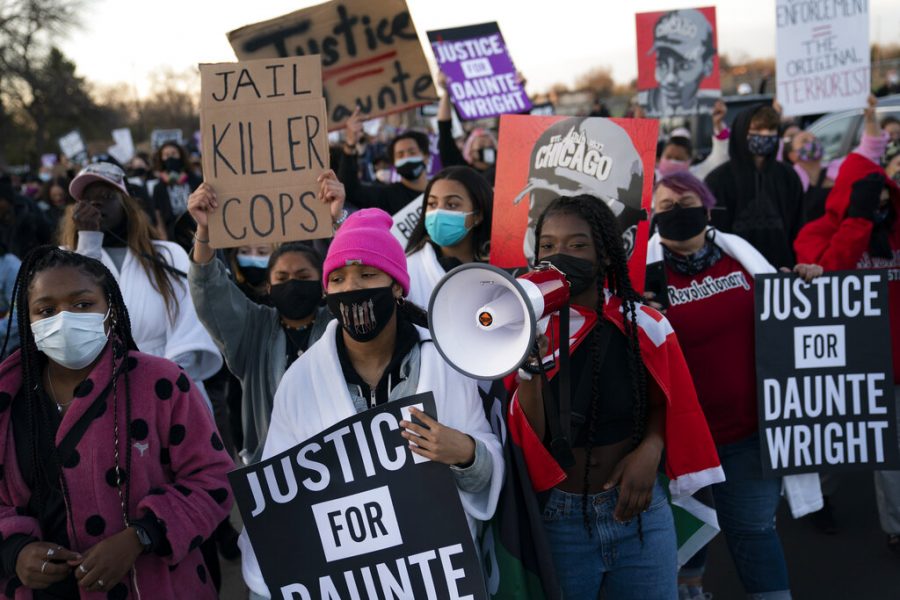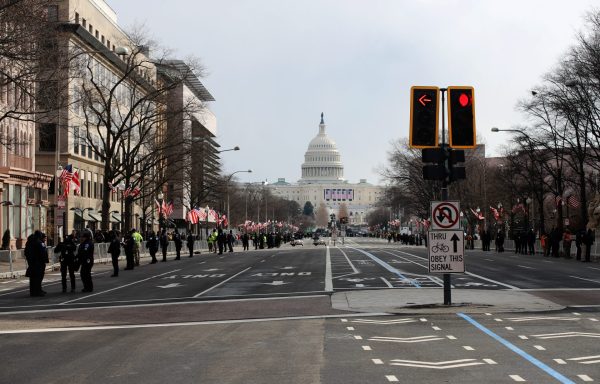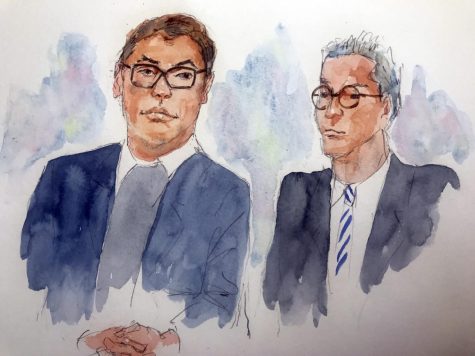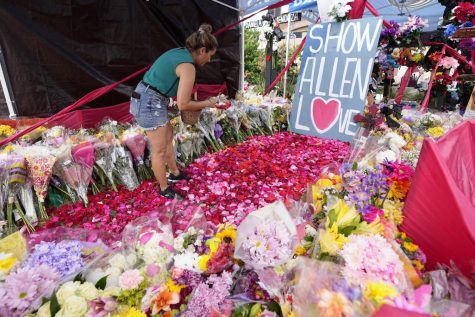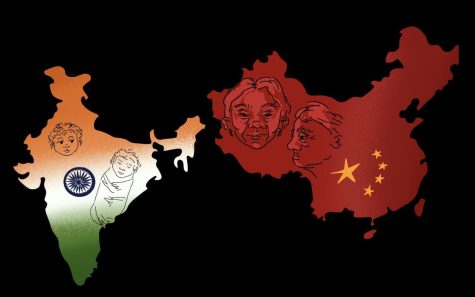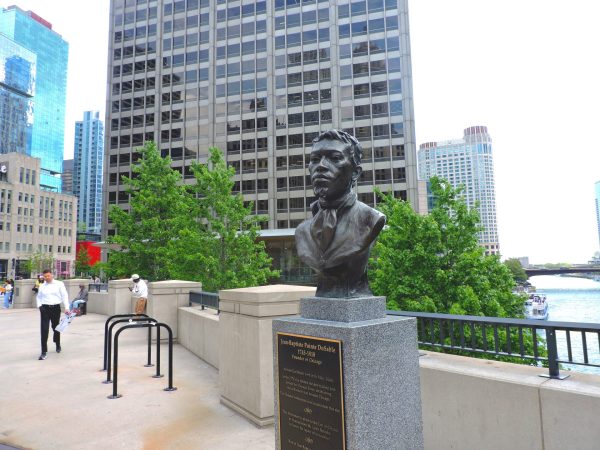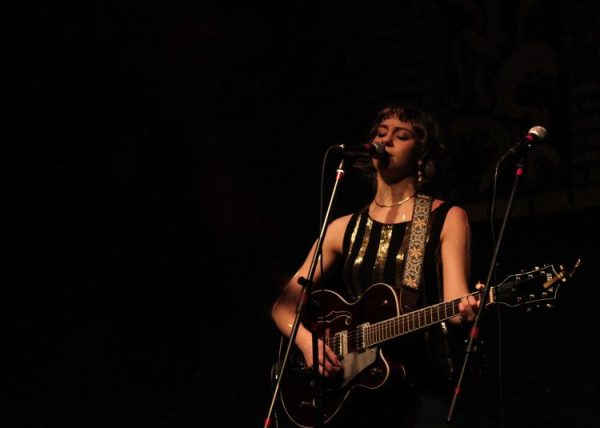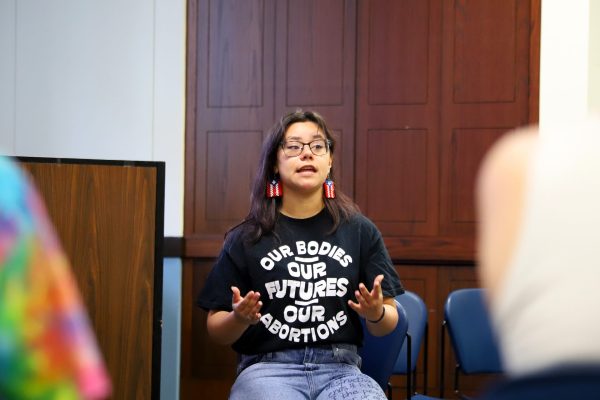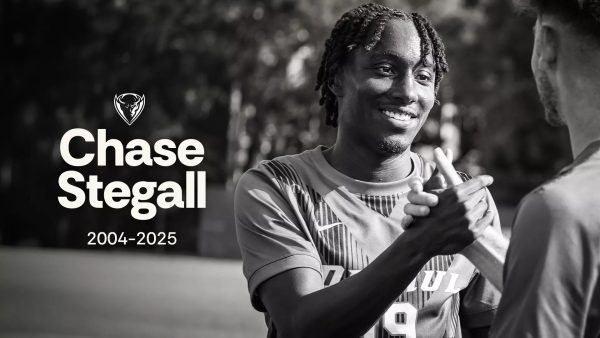Police shooting of Daunte Wright reignites national outcry over killings
AP for The DePaulia
Demonstrators march during a protest over the fatal shooting of Daunte Wright during a traffic stop, outside the Brooklyn Center Police Department, Friday, April 16, 2021, in Brooklyn Center, Minn. (AP Photo/John Minchillo)
Protests are again sweeping the nation following the fatal police shooting of 20-year-old Daunte Wright in Brooklyn Center, Minnesota. Wright’s April 11 killing is the latest in what many Americans see as a pattern of unjust police violence against racial minorities.
Kim Potter is the former Brooklyn Center police officer charged with Wright’s death. Potter can be heard on her body camera footage warning Wright, who was in his vehicle, that she was going to tase him. Despite wielding her Glock 9mm handgun, Potter repeatedly shouted “Taser!” and eventually fired one shot into Wright’s left side. She is now facing second-degree manslaughter charges following the shooting.
“This is part of a long narrative of police violence against
communities of color,” said Xavier Perez, professor of criminology at DePaul.
Perez said that incidents like this are caused by the longstanding culture of U.S. law enforcement, and that the rise of social media and police body cameras have just recently made them more noticeable to the general public.
“I would simply say that this is the history of America,” he said. “The surfacing of law enforcement goes hand in hand with efforts to socially control working class communities of color.”
Activists are outraged that, despite the increase in public awareness surrounding instances of police brutality, the attention seems to be doing nothing to stop them from occurring. After all, the killing of Wright occurred just miles away from where George Floyd was killed in 2020, and in the midst of the highly covered trial of the officer who killed him, Derek Chauvin.
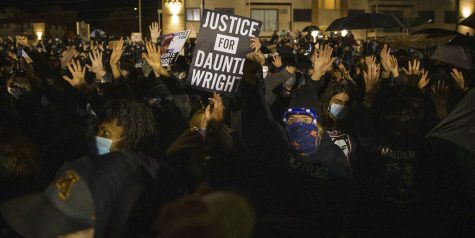
“Still in 2021, after all of the demonstration during the Civil Rights era, we are still at the beginning stages of fighting a system that seems to have one thing in mind: to racially murder Black and Brown people around the country,” said Rabbi Michael Ben Yosef.
Ben Yosef is a Chicago community activist and South Side resident who has been battling this very kind of racial injustice through his organization, Chicago Activist Coalition For Justice. He was discouraged to hear that Kim Potter would only be tried for second-degree manslaughter, a charge that carries a maximum penalty of 10 years in prison and a $20,000 fine.
“I feel, in my opinion, that it’s a slap in the face to the families,” Ben Yosef said, explaining that he “will be calling for first-degree murder” for all police shootings. “It’s a slap in the face to the activists. [Wright] was not given the opportunity of due process… We are going to hold these officers accountable.”
Perez said the issue of provable intent is the main reason the prosecution will be trying Potter for manslaughter instead of murder.
“The prosecution is going to file charges that they believe they’ll be able to prove,” Perez said. “The prosecutor might agree that it would warrant a much more serious charge, but when they go to trial, they’re keeping in mind what they can prove. In this case… I think they came to the conclusion that they can’t prove intent, so then they have to go to the manslaughter category. The manslaughter category, in this case, is pretty clear. It falls under the first definition, actually, which is culpable negligence.”
Brooklyn Center Police Chief Tim Gannon told reporters on Monday that he believed the shooting was accidental, and that Potter had meant to deploy her taser instead of her firearm. Gannon and Potter both resigned from their positions on Tuesday.
Former Des Plaines police officer and Oakton Community College professor of sociology and anthropology George Klein agreed that the shooting was likely accidental, but thinks it is important to “drastically change the way we train police.”
Klein also shared some of the safeguards that police departments have in place to deter officers from confusing their taser with their firearm.

“You’re trained to keep the tasers on your non-dominant side, and your firearm on your dominant side,” he said. “They’re yellow, they’re plastic, and they’re significantly lighter [than a pistol.]”
Despite saying that he believed the shooting was probably accidental, Klein did add that “to reach across your body for the taser is a distinctly different action than reaching for your gun.”
The police killing of Wright is far from an isolated incident. Examples of police violence against minority communities continue to regularly emerge, despite public outcry. Just this week, Chicago residents were faced with disturbing video footage of police shooting 13-year-old Adam Toledo. Toledo appeared to comply with the officers’ orders to raise his hands before being fatally shot.
In the past year alone in the U.S., at least 982 people have been shot and killed by law enforcement, and Black and Latino Americans are each about twice as likely to be killed by police as white Americans, according to data by The Washington Post. Perez said that to solve the dilemma of police violence, we must address law enforcement and race relations as a deeper societal problem.
“I think we have to address other issues about what seems to be the driving force in why police officers are shooting people of color,” Perez said. “What seems to be this threat that they always feel when someone of color might be carrying a gun, or might seem suspicious? Because we don’t seem to carry that same fear when you have armed white men around the country.”


